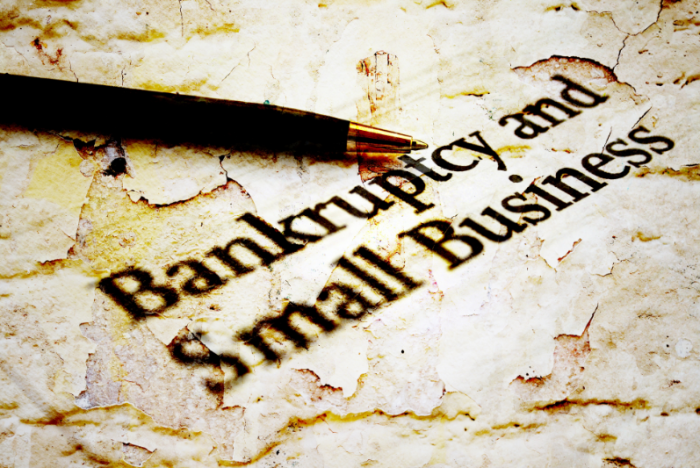
Subchapter V Bankruptcy Proceedings Offer Struggling Small Business Owners a Better, Faster, and Less Expensive Path to Reorganization
For decades, small business owners looking for a bankruptcy lifeline to keep their struggling companies afloat rather than give up the ship essentially had only one option: a proceeding under Chapter 11 of the Bankruptcy Code. Reorganization under Chapter 11 has indeed saved countless businesses that want to restructure their debts and remain a going concern rather than liquidate under Chapter 7. However, the costs, complexities, and often lengthy process of Chapter 11 cases made it burdensome or even infeasible for smaller businesses, leaving them with no choice but to wave the white flag and file a Chapter 7 bankruptcy petition.
Recognizing the shortcomings of Chapter 11 for small businesses, Congress established a new type of proceeding within that chapter – Subchapter V – specifically designed to provide such companies with a simpler, more efficient, and more streamlined path to restructure their debts while maintaining operations. Subchapter V became effective on February 19, 2020, and offers several unique features and advantages for small businesses compared to traditional Chapter 11 proceedings.
Eligibility Threshold
Subchapter V bankruptcy is an available option for small privately held business debtors with debts lower than the threshold set forth in the code. Initially, the debt threshold for eligibility was aggregate, noncontingent, liquidated secured and unsecured debts of no more than $2,725,625. However, this limit was temporarily increased to $7.5 million under the CARES Act to provide greater access to relief during the COVID-19 pandemic. This higher threshold has since been extended multiple times and remains in place. A debtor must also be engaged in commercial or business activities, with at least 50% of their debts arising from these activities.
Simplified, Faster, Cheaper Process
One of the primary objectives of Subchapter V is to reduce the complexity and cost of the bankruptcy process for small businesses. Unlike traditional Chapter 11 cases, Subchapter V does not permit the formation of a creditors’ committee unless ordered by the court for cause. This omission significantly reduces administrative expenses and speeds up the proceedings.
Additionally, Subchapter V cases typically move faster than traditional Chapter 11 cases. The debtor must file a reorganization plan within 90 days of filing for bankruptcy, a much shorter timeframe than the flexible deadlines in standard Chapter 11 cases. The expedited timeline encourages a quicker resolution and reduces the period in which the business is essentially in limbo.
Different Role of the Bankruptcy Trustee
As with Chapter 11 (and Chapter 7), the court appoints a trustee in Subchapter V proceedings. However, the Subchapter V trustee’s role and responsibilities differ from those of their colleagues. Rather than taking control of the debtor’s assets or managing the debtor’s business, the Subchapter V trustee acts as an advisor and facilitator to help negotiate a consensual plan between the debtor and creditors. In certain circumstances, the trustee may oversee the reorganization process and ensure compliance with the plan once it is confirmed.
Debtor Remains in Possession and Control
Under Subchapter V, the debtor typically remains in possession of their assets and continues to operate the business, similar to a debtor-in-possession in standard Chapter 11 cases. This provision allows business owners to retain control and manage day-to-day operations, which can be crucial for maintaining stability and preserving the business’s value. The continuity in management and operations provided by Subchapter V can prove vital for maintaining customer relationships, employee morale, and supplier confidence, which contribute to the ongoing health and value of the business.
More Debtor-Friendly Plan Confirmation
Plan confirmation under Subchapter V is more debtor-friendly compared to traditional Chapter 11. The debtor can confirm a reorganization plan without the approval of any impaired class of creditors, a process known as “cramdown,” as long as the plan is fair, equitable, and does not discriminate unfairly. This provision simplifies the path to plan confirmation and reduces the potential for protracted negotiations with creditors.
Additionally, Subchapter V takes a more straightforward approach to modifying secured and unsecured debts. The debtor must commit all projected disposable income over three to five years to make payments under the plan, ensuring creditors receive a fair return based on the debtor’s future earnings.
The streamlined process, reduced costs, and debtor-friendly provisions discussed above make Subchapter V a valuable tool for small businesses in financial distress. However, the simplified process relative to Chapter 11 does not mean it is simple. Successful navigation of Subchapter V requires careful planning, a clear understanding of the debtor’s financial situation, and strategic use of the available provisions. Experienced bankruptcy counsel should always be consulted and retained to guide business owners through the process so they emerge positioned for sustained stability and success.
If you have questions or want assistance with a Subchapter V Chapter 11 bankruptcy, please contact Julie Teicher at Maddin Hauser.
































